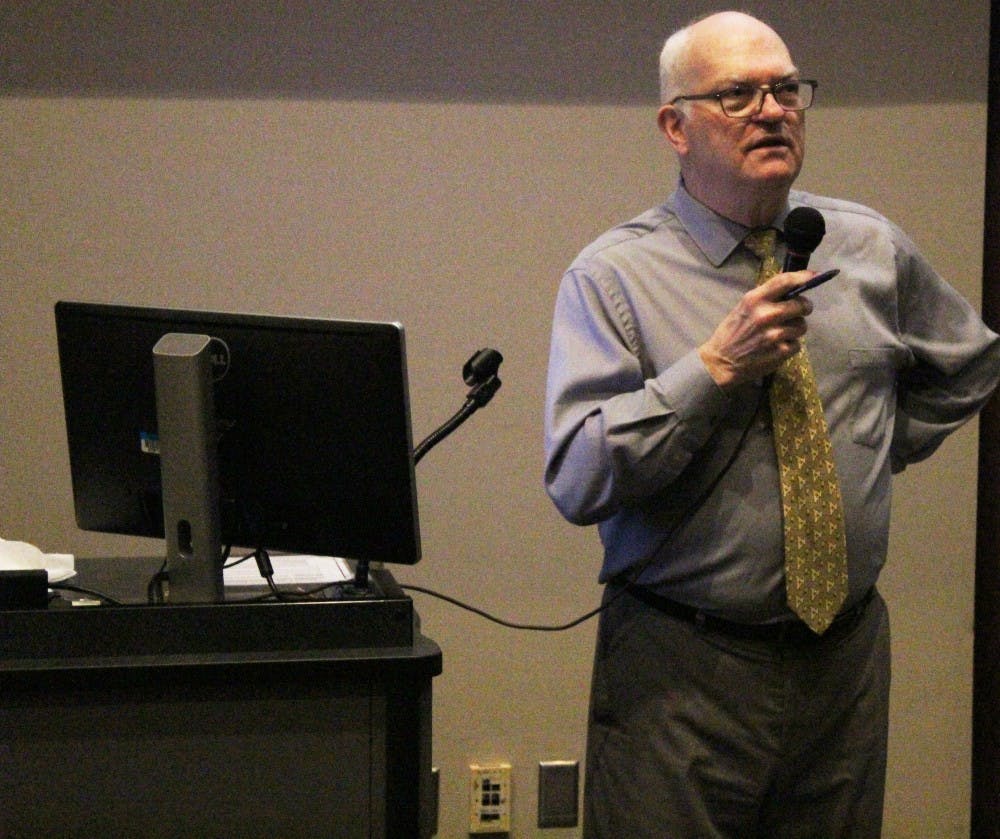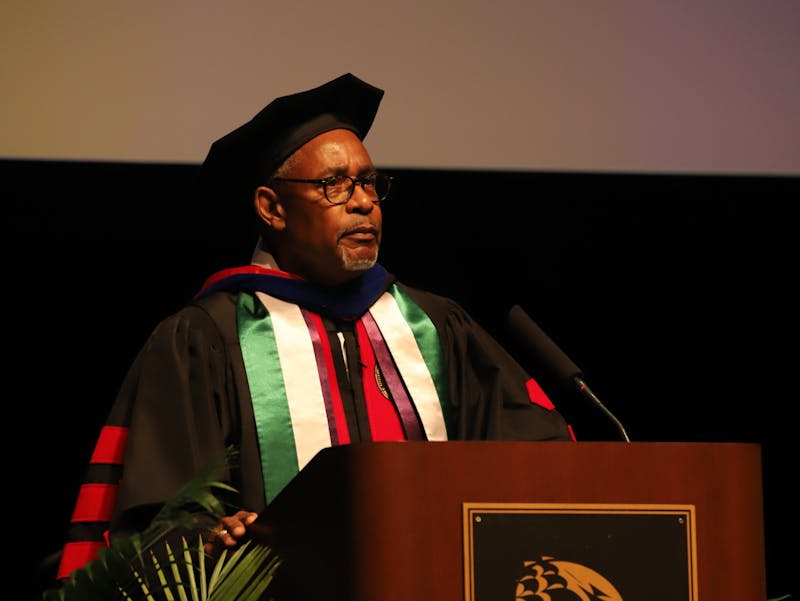Hot balloon-like globes rest on top of Russian churches today, celebrating their freedom they once did not have.
Shippensburg University adjunct sociology professor Jerry Pankhurst lectured on “Putin and the Patriarch: The Church-State Symbiosis That’s Shaping Russian Foreign Affairs” on April 4 in Grove Hall Forum.
During the Soviet Union, the church was outlawed. In 1937, Joseph Stalin orchestrated the bombing of the Moscow Cathedral of Christ the Saviour as part of his anti-religious movement. Soon, former churches became empty shells and the people of Russia converted to Atheism, according to Pankhurst.
In mid-1990s, former Moscow Mayor Yuri Luzhkov promised the people he would aide in restoring the Cathedral of Christ the Saviour. But he did not stop there. Luzhkov helped reclaim other former churches to be given a fresh coat of paint and reopened for service.
“He’s made the square sorta into Disney World,” Pankhurst said.
Overall, the church and state approach international issues, like homosexuality, similarly. According to Pankhurst, there is a church-state symbiosis due to similar values, interests, cultural background and lifestyles.
It has now been a quarter of a century since the Soviet Union collapsed and the effects are still felt.
“The whole nation is suffering from a PTSD,” Pankhurst said.
Pankhurst described how he and his colleagues feel Russia, Ukraine and Belarus unite to become one country. However, many of the countries are relieved to be free of the Soviet Union’s grip.
Pankhurst suggested Russia can instead create a symbolic territory where they spread the Russian culture and language outside of border lines and into other countries.
Pankhurst previously taught Russian and Central Eurasian Studies at Wittenberg University in Ohio. During both his undergraduate and graduate schooling, Pankhurst attended Moscow University.




The Slate welcomes thoughtful discussion on all of our stories, but please keep comments civil and on-topic. Read our full guidelines here.